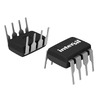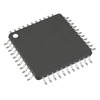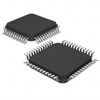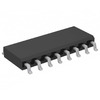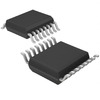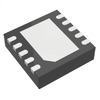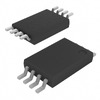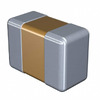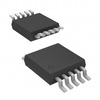Digital Signal Processing: Principles and Applications
This guide introduces Digital Signal Processing (DSP), as explored in Yang Yiming's 2012 book Digital Signal Processing. DSP combines theory and practice to improve how digital signals are processed and understood across industries like telecommunications and biomedical engineering. By converting analog signals into digital formats, DSP allows for more precise manipulation, boosting system performance and efficiency. As technologies like artificial intelligence merge with DSP, its applications continue to grow, making it area for innovation. This guide covers the core principles, applications, and future directions of DSP, for exploring this evolving field.Catalog

Overview
The course "Digital Signal Processing" delves into the transformation of phenomena into numerical data for analysis and practical applications. It emphasizes the role of sensors in converting physical attributes like sound and pressure into electrical signals, which are digitized and processed using a digital signal processor (DSP). Key components of a DSP system include signal conversion, noise filtering, analog-to-digital conversion (ADC), and digital-to-analog conversion (DAC), all working together to modify and analyze signals for tasks like sound modulation or radio wave transmission. By streamlining these processes into interconnected units, the course highlights the efficiency and sophistication of DSP systems in enabling modern communication and data analysis.
Product Features
Signals are the carriers of information for communication and data transfer. They come in two main types: analog signals, which are continuous and suited for traditional applications like audio and video, and digital signals, which are discrete and ideal for modern computing due to their accuracy and efficiency. Signals can also vary in dimensionality, from one-dimensional (sound waves) to multi-dimensional (medical imaging), with each type serving specific purposes. Systems that process these signals whether analog or digital are key to tasks like filtering, compression, and recognition. Over time, digital systems have gained prominence due to their compactness, reliability, and ability to handle complex data with precision. With advancements in digital technology since the 1960s, signal processing has revolutionized fields like telecommunications, multimedia, and AI, enabling innovations that meet the growing demands of a complex, data-driven world.
Processor
Digital Signal Processors (DSPs) are specialized chips designed for tasks like audio, video, and telecom processing. Unlike general processors, they excel at complex calculations using optimized architectures like multiply-accumulate (MAC) units and specialized memory systems that handle large data streams efficiently. DSPs ensure high-speed performance, from improving signal clarity in telecommunications to enhancing audio quality with features like noise reduction. With advancements integrating AI, DSPs are becoming smarter and more adaptive for future technologies like autonomous vehicles and smart homes.
Completing Multiplication and Addition in a Single Instruction Cycle
Modern processors can perform multiplication and addition simultaneously in a single cycle, which boosts efficiency for tasks requiring heavy calculations like machine learning, graphics, and simulations. This feature speeds up data processing in time applications, especially when combined with techniques like pipelining, which overlaps instruction cycles for better performance.
Separate Program and Data Memory Spaces
Separating program and data memory allows systems to access instructions and data at the same time, reducing delays and improving efficiency. This design, commonly used in DSPs and Harvard architecture, enhances time performance while increasing security by isolating code from data, which prevents potential attacks or corruption.
Enhanced Fast RAM with Dual Memory Access
Fast RAM with independent data buses enables systems to access two memory blocks simultaneously, increasing speed and efficiency. This is beneficial for multitasking applications like gaming and analytics, as it reduces lag and improves performance. Future memory technologies will continue to build on this innovation with faster standards and improved designs.
Low-Overhead Hardware for Loops and Jumps
Efficient hardware support for loops and jumps minimizes delays in repetitive tasks, required for systems. Techniques like branch prediction reduce misprediction penalties, while optimizations like tail call eliminate unnecessary overhead. These improvements make systems faster and more reliable for complex control flows in applications like AI and high-performance computing.
Rapid Interrupt Handling and Advanced I/O
Rapid interrupt handling ensures systems stay responsive by prioritizing urgent tasks and managing them quickly. Combined with advanced I/O technologies like Direct Memory Access (DMA), which speeds up data transfers without using the CPU, these innovations improve multitasking and efficiency in fields like telecommunications and embedded systems.
Multiple Address Generators per Cycle
Multiple hardware address generators operating in parallel allow faster access to memory, improving performance in data-heavy tasks like graphics rendering and AI. By distributing memory requests efficiently, systems reduce delays and handle complex workloads more effectively, with future designs likely introducing even smarter, adaptive addressing techniques.
Parallel Operations
Parallel operations enable multiple tasks to run at the same time, boosting speed and productivity while reducing bottlenecks. By distributing workloads and managing task dependencies efficiently, industries like computing, manufacturing, and AI can achieve higher output and reliability, even under heavy workloads or errors.
Pipelined Operations for Overlapping Tasks
Pipelining improves processing efficiency by overlapping instruction fetching, decoding, and execution. This approach increases throughput by allowing multiple instructions to be processed simultaneously. Challenges like data and control hazards are addressed through techniques like forwarding and branch prediction, ensuring smooth and efficient operations.
Application
Digital Signal Processing (DSP) is a technology focused on analyzing, transforming, filtering, detecting, and modulating signals using digital methods. It is widely used across industries and continues to evolve with advancements in digital circuits and systems, making its applications great in modern technology.
Digital Filters
Digital filters, categorized as finite impulse response (FIR) or infinite impulse response (IIR), can be implemented in hardware or software. Hardware filters use components like adders and multipliers, offering compact, programmable designs with greater stability. Software filters run on general-purpose computers, leveraging algorithms for customized solutions. Digital filters are a core of DSP due to their flexibility and efficiency.
Fourier Transform
The Fast Fourier Transform (FFT), introduced in 1965, revolutionized DSP by making discrete Fourier transforms (DFTs) faster and more practical. FFT enables operations like correlation and convolution, and can be implemented in hardware or software. Other algorithms, such as Walsh or number-theoretic transforms, further enhance signal analysis, showcasing how mathematical principles evolve into practical tools.
Spectrum Analysis
Spectrum analysis examines signal properties in the frequency domain, applied to both deterministic (precisely defined) and random (statistical) signals. For random signals, methods like mean, variance, and power spectral density are used to extract insights. Estimation techniques play a critical role, especially when working with limited datasets. Spectrum analysis is used in fields like communication, radar, biomedical studies, and geophysics, emphasizing DSP's versatility.
Voice Signal Processing
Voice signal processing focuses on tasks like speech recognition, synthesis, enhancement, and compression. These applications require advanced algorithms and fast hardware to handle processing, supporting innovations in intelligent systems, robotics, and AI-driven technologies.
Image Signal Processing
Image signal processing is important in fields like medical imaging, meteorology, and autonomous vehicles. Key techniques include image enhancement, restoration, segmentation, recognition, coding and reconstruction. This field evolves rapidly, reflecting advancements in technology and the growing need for sophisticated image analysis.
Vibration Signal Processing
In industries such as automotive, aerospace, and construction, vibration signal processing is good for analyzing system behavior. Techniques like modal analysis extract parameters such as stiffness and damping, supporting safety improvements and performance optimization.
Geophysical Processing
Geophysical processing is used in seismic exploration to identify underground mineral deposits by analyzing reflected waves from artificial shocks. Advanced methods like deconvolution and homomorphic filtering help interpret complex geological data, driving research in this area.
Biomedical Signal Processing
Biomedical signal processing applies DSP to fields like neurology and genetics, with techniques such as EEG, ECG, and X-ray tomography. Emerging approaches inspired by neural processes promise future breakthroughs where technology and biology merge more seamlessly.
About us
ALLELCO LIMITED
Read more
Quick inquiry
Please send an inquiry, we will respond immediately.

Understanding PMOS Technology: Applications, Characteristics, and Innovations
on December 30th

Everything You Need to Know About DDR3
on December 30th
Popular Posts
-

Understanding Power Supply Voltages in Electronics VCC, VDD, VEE, VSS, and GND
on June 13th 24175
-

USB-C Pinout and Features
on June 13th 21286
-

The Ultimate Guide to Wire Color Codes in Modern Electrical Systems
on January 1th 17465
-

TL494 Current-Mode PWM Controller IC
on January 1th 14733
-

Current Divider Circuits and Effective Use of the Divider Formula
on January 1th 13630
-

FET (Field Effect Transistor) Circuit Symbols
Field-Effect Transistors (FETs) are widely used in modern electronics and are found in everything from simple devices to complex digital systems. To work with these transistors effectively, it's helpful to understand the symbols that represent different types of FETs. These symbols do more than just show what the transistors look like—they also provide information about how each transistor works ...on January 1th 13440
-

Quality (Q) Factor: Equations and Applications
The quality factor, or 'Q', is important when checking how well inductors and resonators work in electronic systems that use radio frequencies (RF). 'Q' measures how well a circuit minimizes energy loss and impacts the range of frequencies the system can handle around its main frequency. In systems with inductors, capacitors, and tuned circuits, a higher 'Q' means the circuit focuses more on a spe...on January 1th 13393
-

Understanding and Building Op-Amp Based Peak Detectors
In the world of electronic circuit design, peak detectors are key tools for accurately analyzing and processing signal strengths. These circuits are designed to find and keep the highest signal amplitude, making sure the peak value is precisely captured and held as needed. Peak detectors are important in many fields, from improving audio quality in communication systems to aiding medical diagnoses...on June 13th 12497
-

LM741 Op-Amp: Features, Specifications, and Applications
The LM741 op-amp is a popular and flexible electronic component. This article goes over the pin layout, functions, specs, and different ways the LM741 can be used, while also comparing it to similar models like the LM358.Catalog1. What Is the LM741 Op-Amp?2. The LM741 Pin Configuration3. The LM741 Pin Functions4. Specifications of the LM7415. Features of LM7416. LM741 Circuit Applications7. LM741 ...on June 13th 12034
-

ST-LINK/V2: Pinout, Specifications, and Datasheet
This article takes you through the ST-LINK/V2, a well-regarded tool that amplifies connectivity and functionality. Key topics will cover its pinout configuration, delve into its 3D model, and spotlight specifications. Such understanding expands the horizons of STM microcontrollers in diverse applications. By grasping these interfaces and tools, you can transform embedded systems, opening doors to ...on January 1th 11579















